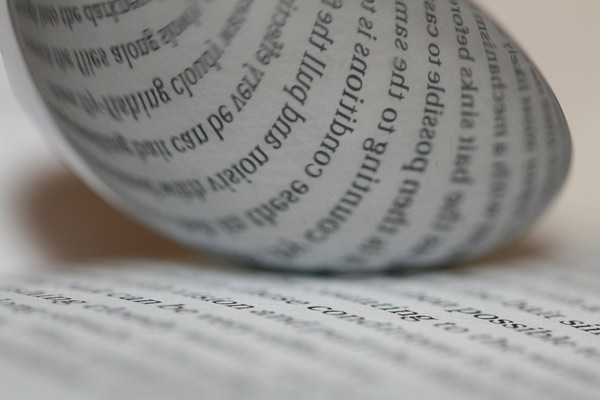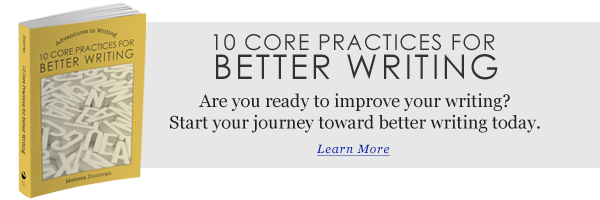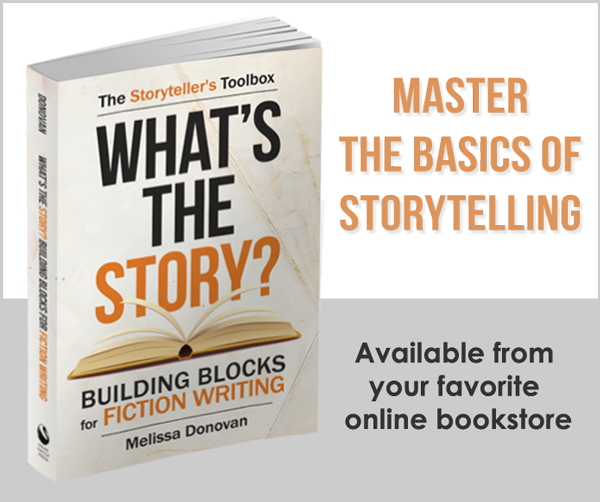We usually think of editing as a process that cleans up our grammar, spelling, punctuation, and sentence structure. But developmental editing is a little different. A developmental editor looks at the content and structure of a writing project, paying little (or no) heed to the mechanics of the language.
Developmental edits are for projects that are destined for submission or publication, usually a long-form project, such as a novel. As the term implies, this edit is done while the project is still in development; in other words, it’s not part of the polishing process that is usually associated with editing.
What Developmental Editing Accomplishes
Developmental editors rarely see a final draft or polished manuscript. Many developmental editors prefer to work off detailed outlines (before the first draft of the manuscript has been written), which allows the editor to get a crystallized vision of the form, structure, and content. Early drafts are also used, and they should be clean drafts but not polished and ready for publication.
For a nonfiction project, a developmental editor will look at the overall structure and organization to make sure it’s laid out in a logical way. If the project targets a general audience, a developmental editor can assess whether the information is clear and thorough. If the project targets a niche audience, you might need to find a developmental editor with expertise on the subject matter.
Developmental editors are commonly hired for fiction projects. They’ll provide feedback similar to an in-depth critique. A developmental editor assesses all major story elements: plot, characterization, setting, and theme being most prominent. They’ll review your subplots and the overall pacing and structure of the story. They’ll look for plot holes, character inconsistencies, point out areas where the narrative is repetitive or redundant, and note missing details that are essential to the story.
Working with a Developmental Editor
A good developmental editor strives to help the author realize their artistic vision for a story. It’s not about injecting the editor’s ideas into the story — it’s about bringing the author’s vision to its fullest potential.
If you’re going to work with a developmental editor, be prepared to be challenged and face the flaws in your work. It’s not always easy, but it’s one of the best ways to improve your skills as a writer, especially as a storyteller. Stories — novels in particular — are often complex and elaborate. It’s difficult for an author to see problems big and small in their own outlines and manuscripts. A second set of eyes — especially a professional’s eyes — can make all the difference in making a weak story strong or making a mediocre story great.
If you decide to work with a developmental editor, be aware that an outline might be a more efficient and affordable way to go. Here are a few reasons for that:
- It’s easier on your budget. It takes a lot longer to provide feedback on a full manuscript than on an outline, and developmental editors charge either by the word or the hour.
- Outlines tend to crystalize a story, removing the fluff and revealing the bare bones, and that’s where the most significant problems reside. Without the exposition, description, dialogue, and other window dressing, it’s much easier to see the core story and assess its most important elements.
- Outlines also save the author a lot of time. It’s faster and easier to make sweeping changes to a twenty-page outline than it is to revise a four-hundred page manuscript.
Some authors don’t outline, and that’s okay too. If you’ve already written a draft, you can cull an outline from it, or you can get the full draft developmentally edited.
Tips for Getting a Developmental Edit
- You should line up your developmental editor well ahead of time. Many editors are hustling for gigs, and they try to keep their schedules full. Reach out to the editor a couple of months before you expect your project to be ready, and let them know you’d like to hire them when the time comes. Give them an estimated timeline, but be cautious about locking anything down (as most of us know, writers sometimes don’t finish their projects on schedule).
- Ask about the editor’s fees when you contact them, so you can plan your budget well in advance, especially if you need some time to save up. Developmental edits are not cheap.
- Let the developmental editor know how much material you’ll be sending (a thirty-page outline or a 100,000-word draft), and ask them how much time they’ll need to complete their work, so you can plan accordingly. Respect the timeline that your editor provides. If you press for a fast turnaround, you might end up getting a rush job.
- Make sure your draft or outline is thorough but concise. This is a difficult balance to strike: with an outline, make sure the most important details are included, but keep it clean and free of unnecessary details; a manuscript draft shouldn’t be totally polished, but it shouldn’t be sloppy either.
- Approach the project with professionalism. I’d recommend treating the material you’re sending to your developmental editor like an assignment for school or work. Send a clean copy.
- Be thorough. This can be a problem in outlines, when writers might skimp on certain details in an effort to save time (or money on the cost of the edit) or because they know the material so well, they forget to include important information. The developmental editor needs the gist of the whole project.
- If you’re sending an outline, I’d recommend learning how to properly format an outline. An outline is not a brainstorm or a draft. It should show where scene breaks and chapter breaks occur. It rarely includes dialogue, exposition, or description. It’s often written in present tense, even if the manuscript will be in another tense.
Make Your Writing Project Shine
Writers have asked me if it’s better to invest in a developmental edit or a copy edit. That’s a tough call, and it really depends on the writer, their strengths and weaknesses, and their resources. Some writers are advanced with language but are still learning storytelling — they might get better results from a developmental edit. But in most cases, a copy edit is probably the best choice, if you have to pick between the two types of edits. Works that are full of grammatical mistakes and typos can be fairly unpalatable for readers.
If budget is an issue, you can round up some beta readers instead of hiring a developmental editor, but beta readers rarely provide feedback at a professional level. No matter how many books someone has read, there is a depth of study that makes a huge difference in analyzing and assessing a writing project, particularly in the realm of storytelling.
Have you ever gotten developmental edit on one of your projects? Are you planning to get one of your projects developmentally edited by a professional? Share your thoughts about developmental editing by leaving a comment, and keep writing.






I have only worked with a developmental editor three times. We had one at “Wondrous Tales” back in the seventies. “Mary Fitzgerald” and she was great; saw potential in everything. Then finishing my first novel, all was not going well. “Janis Farlaine” was appointed to me by my publisher, and she ripped my book apart. Had me put it back together without all the “enhancements” I had added. “This is a simple suspense story, keep it that way, forget all the fancy writing and references”.
Twenty minutes and two cups of coffee later we had a plan. The three hundred page novel became 135 but it sold. Sadly, my last experience did not go well, the elderly gentleman, (couldn’t make out his name) though learned, was drunk obviously had not read the book and his suggestions were silly.
Developmental editing is not easy. I’ve done quite a bit of it, and I’ve found that it’s much easier to work off a detailed outline, particularly when the goal is to fix story problems rather than the prose. It can save time, and if you’re paying for the edit, money. However, it can make a huge difference. Other people can always spot problems we can’t see. I’m glad most of your experiences were positive and sorry they weren’t all beneficial.